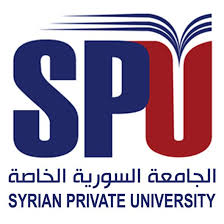اشترك بالحزمة الذهبية واحصل على وصول غير محدود شمرا أكاديميا
تسجيل مستخدم جديدGeneration of time-bin entangled photons without temporal post-selection
359
0
0.0
(
0
)
اسأل ChatGPT حول البحث

ﻻ يوجد ملخص باللغة العربية
We report on the implementation of a new interferometric scheme that allows the generation of photon pairs entangled in the time-energy degree of freedom. This scheme does not require any kind of temporal post-selection on the generated pairs and can be used even with lasers with short coherence time.
قيم البحث
اقرأ أيضاً
Time-bin entangled photons are ideal for long-distance quantum communication via optical fibers. Here we present a source where, even at high creation rates, each excitation pulse generates at most one time-bin entangled pair. This is important for t
he accuracy and security of quantum communication. Our site-controlled quantum dot generates single polarization-entangled photon pairs, which are then converted, without loss of entanglement strength, into single time-bin entangled photon pairs.
Long distance quantum communication is one of the prime goals in the field of quantum information science. With information encoded in the quantum state of photons, existing telecommunication fiber networks can be effectively used as a transport medi
um. To achieve this goal, a source of robust entangled single photon pairs is required. While time-bin entanglement offers the required robustness, currently used parametric down-conversion sources have limited performance due to multi-pair contributions. We report the realization of a source of single time-bin entangled photon pairs utilizing the biexciton-exciton cascade in a III/V self-assembled quantum dot. We analyzed the generated photon pairs by an inherently phase-stable interferometry technique, facilitating uninterrupted long integration times. We confirmed the entanglement by performing a quantum state tomography of the emitted photons, which yielded a fidelity of 0.69(3) and a concurrence of 0.41(6).
Resonant excitation of the biexciton state in an InAsP quantum dot by a phase-coherent pair of picosecond pulses allows for preparing time-bin entangled pairs of photons via the biexciton-exciton cascade. We show that this scheme can be efficiently i
mplemented for a dot embedded in an InP nanowire. The underlying physical mechanisms can be represented and quantitatively analyzed by an effective three-level open system master equation. Simulation parameters including decay and intensity depending dephasing rates are extracted from experimental data, which in turn allow for predicting the resulting entanglement and finding optimal operating conditions.
A weak measurement performed on a pre- and post-selected quantum system can result in an average value that lies outside of the observables spectrum. This effect, usually referred to as an anomalous weak value, is generally believed to be possible on
ly when a non-trivial post-selection is performed, i.e., when only a particular subset of the data is considered. Here we show, however, that this is not the case in general: in scenarios in which several weak measurements are sequentially performed, an anomalous weak value can be obtained without post-selection, i.e., without discarding any data. We discuss several questions that this raises about the subtle relation between weak values and pointer positions for sequential weak measurements. Finally, we consider some implications of our results for the problem of distinguishing different causal structures.
Heralding techniques are useful in quantum communication to circumvent losses without resorting to error correction schemes or quantum repeaters. Such techniques are realized, for example, by monitoring for photon loss at the receiving end of the qua
ntum link while not disturbing the transmitted quantum state. We describe and experimentally benchmark a scheme that incorporates error detection in a quantum channel connecting two transmon qubits using traveling microwave photons. This is achieved by encoding the quantum information as a time-bin superposition of a single photon, which simultaneously realizes high communication rates and high fidelities. The presented scheme is straightforward to implement in circuit QED and is fully microwave-controlled, making it an interesting candidate for future modular quantum computing architectures.
سجل دخول لتتمكن من نشر تعليقات
التعليقات
جاري جلب التعليقات


سجل دخول لتتمكن من متابعة معايير البحث التي قمت باختيارها


